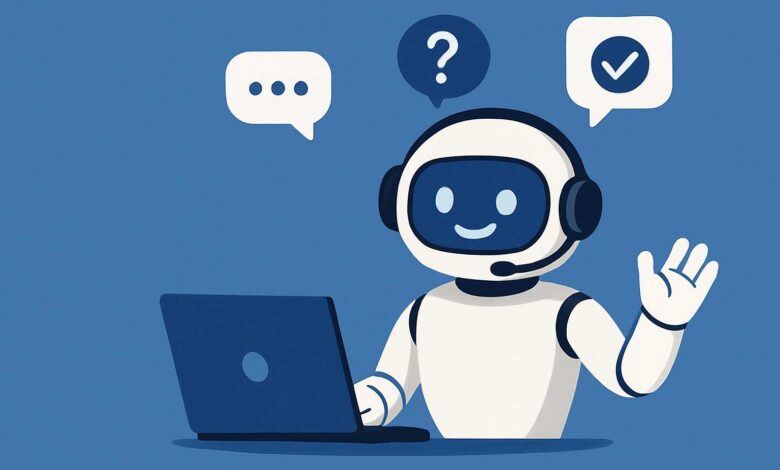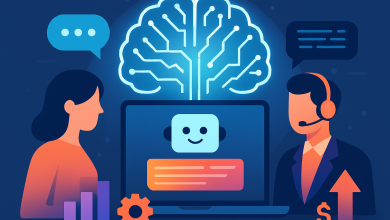
We’ve all been there: begging to speak to a real person, only to be handed off to one who sounds just as robotic as the bot before them. They offer the same scripted apology, the same vague reassurance, before redirecting you to another department, another hold line, another dead end. You shout “I want a real person who can help” into the void of a phone system that refuses to understand you.
And when AI came along, it was easy to blame the machines. Terrible customer service? Must be the chatbot.
But human support can be just as infuriating and just as ineffective. Critics say AI can’t fix this, that it’s just another patch on a broken model.
They’re partly right.
The problem isn’t the human. It isn’t the AI. It’s the script. It’s the way businesses have treated customer service not as a lifeline, but as a line item. And that mindset – not the tools themselves – is what’s truly broken.
How do we rebuild customer service around systems, whether human or AI, that actually understand people?
Scripted support is worse than no support
A bad experience with a chatbot is irritating. A bad experience with a human following a script is worse, because it feels fake.
When customers are upset, confused or need help, they aren’t just looking for a resolution. They’re looking to be understood. Canned replies might check a compliance box, but they erode trust. They make people feel unseen, like their problems are being managed, not solved.
Most companies aren’t offering real support. They’re offering resolution theatre. A chatbot that loops you back to the FAQ, or an agent limited to ticking boxes on a workflow, both are symptoms of the same deeper issue: customer service that’s been built to close tickets, not to solve problems.
Scripted empathy like this is insulting. It’s a surface-level simulation of care, designed to placate rather than engage. And customers know the difference.
More than 50% of consumers will switch to a competitor after one bad experience. When support is obviously scripted, it’s often more damaging to the brand than no support at all.
We’ve normalised the idea that ‘support’ means deflection. That helping someone means sending them instructions and hoping they sort it out. That resolving an issue is the same thing as ending a conversation. It’s not. It never was.
And this isn’t just frustrating, it’s expensive. Customer-centric companies are up to 60% more profitable than their competitors. Every time a customer hits a wall, gives up, or walks away, it’s a loss. A lost sale, a lost renewal, a lost relationship.
Great products can’t outgrow broken experiences. And yet, most tools on the market are still optimised for throughput, not trust. They’re built for task completion, not connection.
Effective customer service is adaptive and human-centred
Real customer service doesn’t start with “Hi, how can I help?” It starts with understanding: what someone needs, how they’re feeling, and how best to help them in that moment. Whether delivered by a human or AI, great support is never static. It listens. It learns. It adapts.
That means recognising returning customers and remembering past conversations, picking up on tone and adjusting accordingly, not sending a chipper response to someone who’s clearly frustrated. And not just acknowledging the issues, but actually resolving it. 90% of consumers worldwide consider issue resolution as their most crucial customer service concern. In short, the best customer service doesn’t follow a script. It reads the room.
Effective customer service shouldn’t have to force customers to repeat themselves or switch channels to be heard. It picks up the conversation wherever it left off, with context intact, across multiple channels – WhatsApp, voice, email, or live chat. Customer service should be capable of knowing the customer, the situation, the history, and most importantly, how they’ve felt throughout. We don’t need customer service that sounds helpful, we need it to get things done.
The capabilities of emotionally-sentient AI
This is where AI, when built with the right intent, moves beyond automation into something much more meaningful: connection at scale.
The best AI systems today don’t just recognise your words, they understand what you mean. They can pick up on tone, remember what’s been said, know what’s been tried, and respond with full context. They don’t start over every time you reach out. They keep track, pick up where things left off, and actually move things forward.
And because they’re connected to the tools a business already uses, such as booking platforms, CRMs and billing systems, they can do more than point you in the right direction. They reschedule appointments, issue refunds, update your file, follow up. It’s not about sounding helpful but actually being helpful.
This is a big shift. For years, scripted support stuck around because there wasn’t a better way.
Now there is. Today’s AI isn’t just keeping pace with human support. In many ways, it’s doing it better. Not because it replaces people, but because it gives businesses something people alone can’t: scale and consistency, without sacrificing intelligence or care.
For customers, this means you’re not repeating yourself to a new agent on a new channel every time. You’re not treated like a ticket. You’re treated like someone who’s already explained what they need and who deserves a real answer and solution.
For businesses, it means customer service finally becomes what it was always supposed to be, something that builds trust, reflects your values, and leaves people with a good impression and resolution, instead of more frustration.
This kind of AI doesn’t make support colder. It makes it feel more human because it listens, learns, and actually remembers what matters.
AI can’t fix customer service
The point isn’t whether AI can fix customer service. It already can if we let it, the technology is ready, what’s holding us back is our intention and mindset.
We don’t have to choose between fast and thoughtful, efficient and personal. We can have all of it. But only if we stop clinging to systems that were never built to understand people and start building ones that finally do.
If your customer experience is still running on scripts, you’re already behind.





